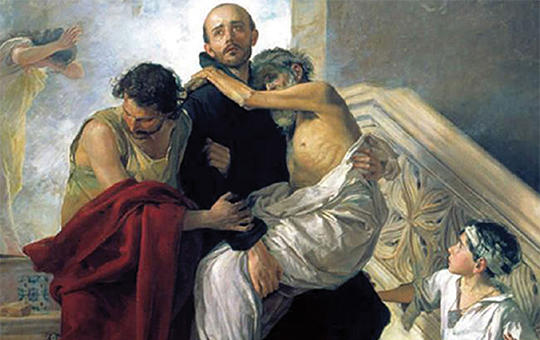The eLitMed.hu medical portal uses computer cookies for convenient operation. Detailed information can be found in the Cookie-policy.
Specialities
Pharmacy
[Middle meningeal artery embolization to treat acute epidural haematoma, case report and literature review ]
[The treatment of acute epidural haematoma is surgery as soon as possible, elimination of the source of bleeding and evacuation of the haematoma. In case of small epidural haematoma, strict neurological and radiological follow-up is necessary. In a significant percentage of cases, open surgery must also be performed within a few days. In case of small epidural haematomas, embolization of the middle meningeal artery is considered as an alternative solution. We review the literature on middle meningeal artery embolization and present our first treatment. Our case report is the first European report about an acute epidural haematoma which was treated by embolization of middle meningeal artery. Our case study is the first report in which a patient was treated with both open surgery and endovascular treatment for acute epidural haematoma within a year.]
[Chronic thromboembolic pulmonary hypertension ]
[
Chronic thromboembolic pulmonary hypertension (CTEPH) is a vascular disease associated with pulmonary artery thrombosis, which causes changed flow patterns and remodeling of pulmonary blood vessels. CTEPH is a rare long-term complication of pulmonary embolism the cumulative incidence of which ranges between 0.1-9.1 in symptomatic patients. Early sign is the effort dyspnoea, later are dominating the right heart failure symptoms, and rarely the syncope.
CTEPH should be suspected if there are emerging signs of chronic pulmonary artery thrombosis and echocardiography indicates symptoms of pulmonary hypertension. Demonstrating thrombosis V/Q scan, CT angiography or pulmonary angiography can be performed and in case of pulmonary hypertension right heart catheterisation. The modern approach to CTEPH treatment is a multimodality strategy. Pulmonary thromboendarterectomy is the first treatment of choice, but if the patient is not suitable for surgery, or he/she has chronic thromboembolic pulmonary hypertension, balloon pulmonary angioplasty and/or drug therapy should be considered. Treatment of chronic thromboembolic pulmonary hypertension patients is recommended in a CTEPH program center.]
[Significance and diagnosis of diabetic neuropathy in clinical practice]
[Diabetic neuropathy is an early detectable microvascular complication of diabetes. Most often, we can recognize it by its symptoms of distal-type symmetric polyneuropathy, further the damage to the autonomic nervous system is increasing the cardiovascular mortality. Screening for diabetic neuropathy is essential in clinical practice, since the signs of nerve damage related to diabetes can be detected at an early stage and open the way to therapeutic interventions. Proper diagnosis and continuous monitoring of diabetic neuropathy is also important during the patient care. This summary concerns the importance and diagnostic options of diabetic neuropathy for clinical practice.]
[Blooming again – women’s life paths after brain injury ]
[After a serious brain injury or trauma, there is damaged the functional capacity of the affected persons and their self-image too. Traditional rehabilitation pays little attention to the female patients’ lost femininity. The aim of this study was to present the way of supporting women to realize again their femininity psychologically and physically alike after a brain injury.
In the Brain Injury Rehabilitation Unit of the National Institute for Medical Rehabilitation, the authors completed the female patients’ rehabilitation with special group sessions once a week. The topics were tailored to the needs of participants. There were targeted two specific objectives: achieving to perceive femininity in an autonomous way and regaining the feeling of femininity in the changed life circumstances due to the injury.
Occupational therapist, physiotherapists and nurses provided service to develop functional abilities. A psychologist helped the participants in trauma processing. Since the beginning in January 2022, two therapy cycles have been completed so far, each of which with 10-12 sessions. A total of 31 female patients and 8 supporting team members participated in these two groups so far.
Personalised rehabilitation was adjusted to the involved persons’ life circumstances, individuality, personality, family and social relations. Our experimental female group helped the participants to experience their femininity physically, mentally and psychologically too, according to their feedback.]
[Introduction of artificial intelligence based national decision support system to improve stroke care in Hungary ]
[Indication for recanalization therapy of acute ischemic stroke is based on imaging procedures. In order to minimize the time loss passing by recognizing the condition and the transfer of images to other facility, we established a stroke imaging network (eStroke network) supported by Artificial Intelligence (AI) in Hungary. Our study aims to present this system.
Organized by the National Institute of Mental Health, Neurology, and Neurosurgery (NIMNN), we included a total of 28 stroke centers, among them 4 thrombectomy centers. An earlier network of the University of Pécs and the widened network parallel with the NIMNN project cover 10 centers thus the service is now available in 38 stroke centers of this country. Stroke CT scans are automatically transmitted via the central teleradiology server to a central image processing server which analyzes the size of the ischemic area (ASPECT score), detects large vessel occlusion and it’s localization, analyzes the quality of collateral circulation and standard CT perfusion parameters using an AI based software (eStroke, Brainomix Ltd.). Results and processed images are sent automatically back to the PACS system of the sending institution and that of the concerning thrombectomy center and become available in anonymous form via cloud by desktop computers or mobile application.
During the first year of operation, the system has processed 38,060 scans of 16,276 patients. In NIMNN experience by samples of 65 and 152 cases, for drip and ship patients the time from the first alerting of the ambulance service, until arrival at the thrombectomy center was reduced by 38 minutes from 4:18 to 3:40 minutes.
Building an AI based central stroke imaging network for improving of stroke care’s results is technically feasible. Operation of the eStroke system is capable of reducing patient transportation times, however, further optimization is needed. ]
[The Legacy of Juan de Dios at the Dawn of Modern Nursing]
[The aim of this paper is to provide information on the history and cultural context of the work of Saint John of God, who became the patron saint of nurses and health workers. Sixteenth-century Spain served as a cradle for the innovations of Saint John and his followers, who established hospitals and provided care for the sick and the poor at a time when the Church was immersed in theological debates and thus seemed to forget one of its main missions: humanitarian and charitable aid to those most in need. The development of the Hospitaller Order’s nursing and health care practices, far ahead of its time, including the implementation of rules and regulations for hospitals and the extraordinary training of health professionals, is analysed. The continued work of the Religious of St. John of God, who operate health care and social service institutions in more than 50 countries today, is highlighted. Overall, we wish to provide a historical and cultural overview of the role of nursing and health care in society in the transition from the Middle Ages to the Modern Age. For this purpose, an analysis of the corresponding medieval and contemporary historical literature has been carried out beforehand.]
1.
Clinical Neuroscience
[Headache registry in Szeged: Experiences regarding to migraine patients]2.
Clinical Neuroscience
[The new target population of stroke awareness campaign: Kindergarten students ]3.
Clinical Neuroscience
Is there any difference in mortality rates of atrial fibrillation detected before or after ischemic stroke?4.
Clinical Neuroscience
Factors influencing the level of stigma in Parkinson’s disease in western Turkey5.
Clinical Neuroscience
[The effects of demographic and clinical factors on the severity of poststroke aphasia]1.
2.
3.
4.
5.









